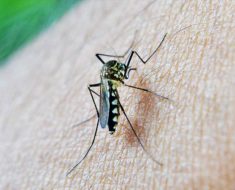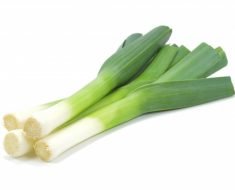In a recent study published in the European Journal of Nutrition, researchers examine the potential link between garlic consumption and the risk of developing colorectal cancer (CRC).
 Study: Garlic consumption in relation to colorectal cancer risk and to alterations of blood bacterial DNA. Image Credit: Volodymyr Plysiuk / Shutterstock.com
Study: Garlic consumption in relation to colorectal cancer risk and to alterations of blood bacterial DNA. Image Credit: Volodymyr Plysiuk / Shutterstock.com
Introduction
CRC is a major cause of cancer-related deaths globally. Recently, CRC mortality rates have increased among young adults in several countries, such as the United Kingdom and the United States.
Garlic consists of several non-digestible carbohydrates, polyphenols, and organosulfur compounds, many of which have been linked to a reduced risk of CRC. Garlic has been proposed to affect intestinal mucosa health and gut microbiota due to its antioxidant, antibacterial, and anti-inflammatory properties.
About the study
In the present study, researchers explore the potential impact of garlic consumption on the risk of CRC and the presence of bacterial deoxyribonucleic acid (DNA) in the bloodstream.
Data were obtained from a case-control study that was conducted between 2017 to 2019 at two university hospitals located in the metropolitan region of Milan, Italy. The study recruited participants who were either inpatients or outpatients scheduled for a colonoscopy, as well as those enrolled in a CRC screening program.
The study cohort consisted of 300 participants, including 100 with confirmed CRC, 100 with intestinal adenoma (IA), and 100 healthy controls. The groups were matched for study center, age, and sex. The average age of CRC patients was 67 years, while IA patients and controls had an average age of 66 years.
Trained interviewers administered a structured questionnaire that included data related to socio-demographic, anthropometric estimates, education, and lifestyle habits like smoking and exercise. The patients' typical diet before colonoscopy was obtained using a food frequency questionnaire (FFQ) that consisted of 75 items on foodstuffs or Italian recipes and five on alcoholic beverages.
Study findings
Medium/high garlic consumption was linked to a non-significant reduction in the risk of IA and CRC as compared to low/null garlic intake. The combined CRC and IA analysis yielded an odds ratio (OR) of 0.39.
There were a total of 50 and 49 cases of colon and rectal cancers, respectively. The ORs for medium/high garlic intake, as compared to low/null intake, was 0.38 and 0.14 for colon and rectal cancer, respectively.
ORs of IA and CRC were calculated based on age, sex, and education strata. The study found that the association was consistent between males and females; however, it was stronger in individuals younger than 70 years of age and those with less than 12 years of education.
There was no notable contrast identified in individuals who consumed medium/high amounts of garlic as compared to those who consumed null/low amounts of garlic in terms of 16S ribosomal ribonucleic acid (rRNA) gene copies and alpha-diversity indices. Medium/high garlic consumption was associated with a decrease in the relative abundance and incidence of Patescibacteria and a possible increase in the presence of Bacteroidetes phylum.
The medium/high garlic intake cohort exhibited a higher prevalence of bacteria in the Corynebacteriales order, Nocardiaceae family, and Rhodococcus genus based on phylogenetic branches. The Rothia genus had higher relative abundances in the group with medium/high garlic consumption, while the Modestobacter genus had lower relative abundances.
Medium/high garlic intake was also associated with lower relative abundances of the Bacillaceae family, Family XI, and Finegoldia genus within the Firmicutes phylum. Furthermore, this cohort medium/high exhibited a lower prevalence of the Caulobacteraceae family and Caulobacterales order.
Conclusions
Garlic consumption was found to reduce the likelihood of CRC and IA and was linked to specific bacterial DNA features in the blood. Garlic consumption also had a direct correlation with certain taxa from Corynebacteriales and an inverse correlation with the relative abundance of taxa from Clostridiales.
Further investigation is needed to determine if there are bacterial DNA markers in the blood that can identify unhealthy diets or disorders. This type of study could potentially lead to personalized treatment options based on garlic consumption and its effects on bacterial taxa prevalence and abundance.
- Speciani, M. C., Gargari, G., Penagini, R. et al. (2023). Garlic consumption in relation to colorectal cancer risk and to alterations of blood bacterial DNA. European Journal of Nutrition. doi:10.1007/s00394-023-03110-2
Posted in: Medical Science News | Medical Research News | Medical Condition News | Disease/Infection News
Tags: Adenoma, Anti-Inflammatory, Antioxidant, Bacteria, Blood, Cancer, Colonoscopy, Colorectal, Colorectal Cancer, Diet, DNA, Education, Exercise, Food, Frequency, Garlic, Gene, Mortality, Nutrition, Ribonucleic Acid, Smoking

Written by
Bhavana Kunkalikar
Bhavana Kunkalikar is a medical writer based in Goa, India. Her academic background is in Pharmaceutical sciences and she holds a Bachelor's degree in Pharmacy. Her educational background allowed her to foster an interest in anatomical and physiological sciences. Her college project work based on ‘The manifestations and causes of sickle cell anemia’ formed the stepping stone to a life-long fascination with human pathophysiology.
Source: Read Full Article





